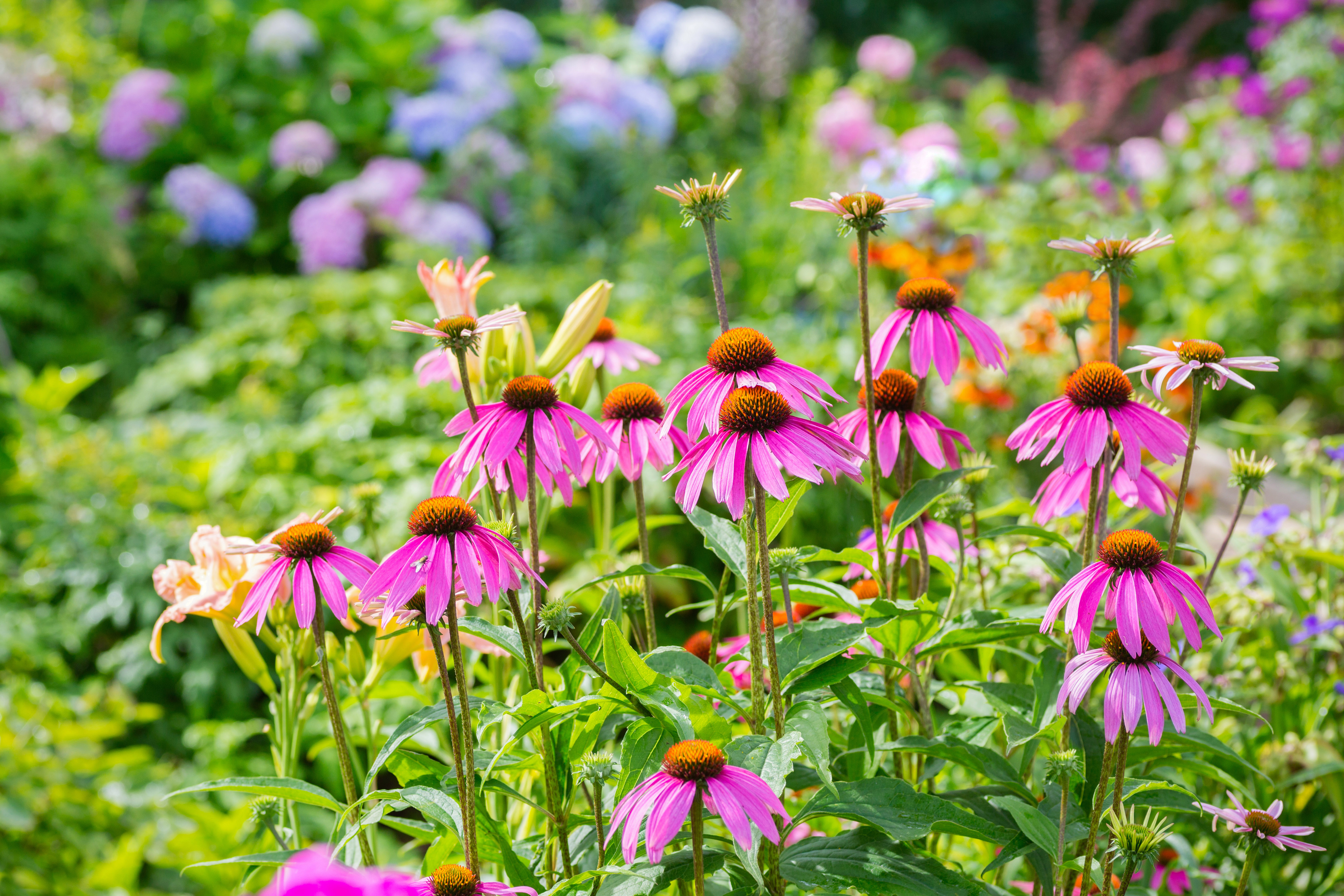Top Low-Maintenance Perennials for Beginners

Top Low-Maintenance Perennials for Beginner Gardeners
Embarking on your gardening journey? You're in the right place! We've compiled a list of low-maintenance perennials that are perfect for beginner gardeners. These easy-care perennials will bloom year after year with minimal effort, allowing you to build your green thumb confidence. Let's dive in!
Why Choose Low-Maintenance Perennials?
Before we jump into our top picks, let's talk about why low-maintenance perennials are a beginner's best friend.
- Low upkeep: These plants require minimal watering, fertilizing, and deadheading, freeing up your time to enjoy your garden.
- Long-lasting: Perennials come back year after year, providing consistent color and texture in your garden.
- Drought-tolerant: Many low-maintenance perennials are drought-resistant, making them perfect for those who want a hassle-free garden.
Top 10 Low-Maintenance Perennials for Beginners
1. Black-Eyed Susan (Rudbeckia hirta)
Kickstarting our list is the cheerful Black-Eyed Susan. This beginner-friendly plant produces vibrant yellow petals surrounding a dark brown center, earning it its name. It's drought-tolerant and attracts pollinators like bees and butterflies.
2. Catmint (Nepeta x faassenii)
Catmint is a low-maintenance flower that produces masses of lavender-blue flowers from late spring to fall. It's drought-tolerant, deer-resistant, and attracts beneficial pollinators. Plus, it's a cat magnet – perfect if you have feline friends!
3. Coneflower (Echinacea)
Coneflowers are easy-care perennials that come in various colors, including pink, purple, and white. They're drought-tolerant, attract pollinators, and are even known for their medicinal properties. Plus, they're virtually pest-free.
4. Daylily (Hemerocallis)
Daylilies are low-maintenance flowers that produce trumpet-shaped blooms in various colors. Each flower lasts for a day, but the plant produces multiple blooms, ensuring a long-lasting show. They're drought-tolerant and require minimal care.
5. Lavender (Lavandula)
Lavender is a fragrant beginner-friendly plant that produces beautiful purple flowers. It's drought-tolerant, deer-resistant, and attracts pollinators. Plus, it's a great addition to herb gardens or used in dried arrangements.
6. Ornamental Grass (Various species)
Ornamental grasses add texture and movement to your garden. They're low-maintenance flowers that require minimal care and provide habitat for wildlife. Some popular choices include Karl Foerster Feather Reed Grass and Switchgrass.
7. Purple Coneflower (Echinacea purpurea)
Similar to its cousin, the purple coneflower is a low-maintenance flower that produces vibrant pink-purple blooms. It's drought-tolerant, attracts pollinators, and is known for its medicinal properties.
8. Russian Sage (Perovskia atriplicifolia)
Russian sage is a beginner-friendly plant that produces masses of lavender-blue flowers from late summer to fall. It's drought-tolerant, deer-resistant, and attracts pollinators. Plus, it has a lovely fragrance.
9. Sedum (Hylotelephium)
Sedum, also known as stonecrop, is a low-maintenance flower that produces fleshy leaves and clusters of flowers in various colors. It's drought-tolerant, attracts pollinators, and provides late-season color.
10. Yarrow (Achillea)
Yarrow is a easy-care perennial that produces flat clusters of flowers in various colors. It's drought-tolerant, attracts pollinators, and is virtually pest-free. Plus, it's a great cut flower.
Perennial Gardening Tips for Beginners
Now that you know our top picks, let's discuss some perennial gardening tips to set you up for success.
- Choose the right location: Most low-maintenance perennials prefer full sun (at least 6 hours of sunlight per day) and well-draining soil.
- Prepare your soil: Before planting, amend your soil with compost or other organic matter to improve its structure and fertility.
- Plant in groups: Planting beginner-friendly plants in groups creates a bigger impact and makes maintenance easier.
- Water regularly: Until established, water your easy-care perennials regularly to help them get off to a good start.
- Mulch: Applying a layer of organic mulch around your plants helps retain moisture, suppresses weeds, and regulates soil temperature.
When to Plant Perennials
The best time to plant low-maintenance perennials is in early spring or fall. This gives them time to establish before the stress of summer heat or winter cold.
How to Divide Perennials
Over time, perennials can become overcrowded, leading to decreased bloom and poor plant health. Dividing perennials every 3-5 years helps rejuvenate them. To divide, dig up the plant, shake off the soil, and separate the roots into smaller sections. Replant these sections in well-prepared soil.
Conclusion
Gardening for beginners doesn't have to be daunting. With the right low-maintenance perennials, you can create a beautiful, low-effort garden that brings joy and life to your outdoor space. So, get out there and start planting!
FAQs
-
Q: How long do perennials live? A: The lifespan of perennials varies, but many can live for 3-5 years, while some, like daylilies and ornamental grasses, can live for decades.
-
Q: Are perennials annuals? A: No, perennials are not annuals. Annuals complete their life cycle in one growing season, while perennials live for multiple years.
-
Q: Do perennials come back every year? A: Most perennials will come back every year, given the right growing conditions. However, some may not return if they're not hardy in your zone or if they're short-lived perennials.
-
Q: How do I care for perennials in winter? A: Most perennials need to be left alone in winter. However, some may benefit from a layer of mulch or protection from harsh winds.
-
Q: What's the difference between perennials and biennials? A: Biennials live for two years, while perennials live for multiple years. Biennials typically produce leaves in their first year and flowers in their second year before dying.
0 Response to " Top Low-Maintenance Perennials for Beginners"
Post a Comment